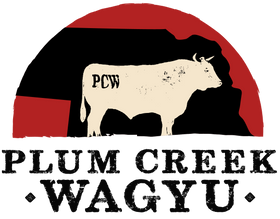Wagyu beef is prized for its exceptional marbling, flavor, and tenderness. Proper storage is essential to maintain its premium quality. In this guide, we’ll explore the best practices for storing Wagyu beef, covering everything from refrigeration and freezing to safe thawing methods.
Refrigeration Tips: Short-Term Storage
If you plan to cook your Wagyu beef within a few days:
- Wrap It Right: Keep it in its original vacuum-sealed packaging or rewrap it tightly in plastic wrap and aluminum foil to prevent air exposure.
- Ideal Temperature: Store in the coldest part of your refrigerator, ideally at 32°F to 36°F.
Freezing Wagyu Beef: Long-Term Storage
For longer storage, freezing is the best option:
- Vacuum Seal for Freshness: Use vacuum-sealed bags to minimize freezer burn and lock in flavor.
- Label and Date: Always label packages with the date of freezing for easy tracking.
- Optimal Freezing Temperature: Ensure your freezer is set to 0°F or lower.
Thawing Methods: Retaining Quality
Improper thawing can compromise the texture and taste of Wagyu beef. Follow these methods:
- Refrigerator Thawing: Place the beef in its sealed packaging on a tray and thaw in the refrigerator for 24-48 hours. This slow process helps retain the beef's natural juices.
- Cold Water Thawing: For quicker results, submerge the sealed beef in cold water, changing the water every 30 minutes.
- Avoid Room Temperature Thawing: Never thaw Wagyu beef at room temperature, as it increases the risk of bacterial growth.
Best Practices for Maintaining Quality
- Portion Control: Freeze Wagyu beef in portions to avoid thawing more than needed.
- Use Quickly After Thawing: Cook thawed Wagyu within 1-2 days to preserve flavor and freshness.
- Refreezing: Avoid refreezing Wagyu beef once thawed, as it can degrade the texture.
With these storage tips, you can ensure that your Wagyu beef retains its luxurious quality until it’s ready to be enjoyed. Proper handling and storage not only maximize freshness but also help you get the most out of every delicious bite.
Looking for premium Wagyu beef to savor at home? Check out our Plum Creek Wagyu offerings for top-quality cuts, delivered fresh to your door!
Related Posts
How We Select and Age Our Wagyu Beef for Optimal Flavor
Learn about the process of selecting and aging Wagyu beef at Plum Creek Wagyu. Discover the differences between dry-aging and wet-aging and how each method enhances the flavor and tenderness of our premium Wagyu cuts.
How We Select and Age Our Wagyu Beef for Optimal Flavor
Learn about the process of selecting and aging Wagyu beef at Plum Creek Wagyu. Discover the differences between dry-aging and wet-aging and how each method enhances the flavor and tenderness of our premium Wagyu cuts.
Sustainable Ranching at Plum Creek Wagyu: Our Eco-Friendly Practices
Discover Plum Creek Wagyu’s commitment to sustainability and eco-friendly ranching practices. Learn about our efforts in land stewardship, water conservation, and reducing our carbon footprint to produce premium Wagyu beef responsibly.
Behind-the-Scenes at Plum Creek Wagyu: From Pasture to Plate
Discover the life cycle of a Plum Creek Wagyu cow, from birth to plate. Learn about the care, feeding, and stress-free environment that contributes to the exceptional quality of our Wagyu beef.
Wagyu Beef vs. Kobe Beef: What’s the Difference?
Curious about the difference between Wagyu and Kobe beef? Learn how these two premium beef types differ in terms of origin, quality, and flavor, and discover why Kobe beef is considered the gold standard of luxury dining.
The Science Behind Wagyu Marbling: Why It’s So Special
What makes Wagyu beef so incredibly tender and flavorful? The secret lies in its marbling. Discover the science behind Wagyu’s signature fat distribution and why it creates the ultimate steak experience.








